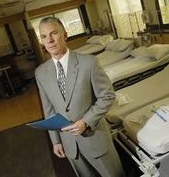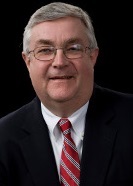Take a leaf from the CEO's playbook. Two ambulatory surgery center company C-suite leaders lay-out nine of the best strategic ASC initiatives for 2015.
 1. Patient collections strategy. The second wave of patients signing up for healthcare coverage through the insurance exchanges is entering the market; high deductibles are rising. As patient financial responsibility increases, so must collections diligence. "We are focused on patient financial responsibility and balances owed by them," says Robert Carerra, president and CEO of PINNACLE III. "We have implemented a patient collections dashboard for all of our facilities." Putting financial expectations in place and communicating them to patients is essential for ASCs to profit from procedures.
1. Patient collections strategy. The second wave of patients signing up for healthcare coverage through the insurance exchanges is entering the market; high deductibles are rising. As patient financial responsibility increases, so must collections diligence. "We are focused on patient financial responsibility and balances owed by them," says Robert Carerra, president and CEO of PINNACLE III. "We have implemented a patient collections dashboard for all of our facilities." Putting financial expectations in place and communicating them to patients is essential for ASCs to profit from procedures.
2. Strengthen physician relations. Physicians remain the core of the ASC industry's success. Continually monitor your physicians' satisfaction and find ways to encourage and accommodate their case load. "Are you meeting your physicians' needs?" asks Mr. Carerra. "Focus on their referral sources. Help put them in the public eye." Strong connections with ASC physicians and their referral sources serve to sustain and grow centers' case volume.
3. Physician leadership. Though new models and partnerships are on the rise, many ASC physicians are independent and want to remain so. "Physicians are looking for leadership within their specialties,"  says Barry Tanner, CEO of Physicians Endoscopy. "They are inundated with change and investment demands. They are asking 'How do we survive and remain independent?'" Seek out physicians who want to take the helm, whether as an ASC medical director or committee leader, and empower them to find new ways to support an ASC's business. Consider new partnerships that have physician buy-in, whether that means a joint venture, joining an accountable care organization or partnering with other ASCs in the area.
says Barry Tanner, CEO of Physicians Endoscopy. "They are inundated with change and investment demands. They are asking 'How do we survive and remain independent?'" Seek out physicians who want to take the helm, whether as an ASC medical director or committee leader, and empower them to find new ways to support an ASC's business. Consider new partnerships that have physician buy-in, whether that means a joint venture, joining an accountable care organization or partnering with other ASCs in the area.
4. Cost cutting. Cutting costs is not a revolutionary concept, but it remains one of the best tools in an ASC's arsenal for combating rising overhead. "We have markedly reduced our supply formulary. Work closely with your group purchasing organization and standardize as much as possible," says Mr. Carerra. Revisit supplier relationships, work with physicians to reduce variety in preference items and turn to your staff for their input on possible cost savings avenues..
5. Perfect financial performance. In addition to cutting costs, it is imperative to revisit and hone every financial function of your center. From accounts receivable to each and every service provider, is the center functioning at the highest level? "Really make sure you are maximizing your margins," says Mr. Tanner.
6. Payer partnerships. Payers and providers alike are under pressure to stretch the healthcare dollar further than ever, all while striving to provide the highest level quality of care. Rather than clinging to an adversarial relationship, it behooves ASCs and payers to work together for a combined advantage. "The way to overcome challenges is anchored in our ability to achieve a better, broader understanding of the ASC value proposition and to find new ways to work with third-party payers to achieve savings by encouraging patients/consumers to seek high quality care from cost advantaged providers," says Mr. Tanner.
ASCs can share goals and savings with payers, and there is no single way to achieve this end. ASCs are working with payers to create bundled payment arrangements, move higher acuity procedures out the hospital and carve out improved reimbursement rates.
7. Aggressive business development and market research. The passive provider is unlikely to survive healthcare changes. "I plan to be more aggressive in business development and be a better student of healthcare innovation," says Mr. Tanner. Constantly look beyond the four walls of your ASC and examine the surrounding market. The better the understanding of an ASC's competition, potential partners, possible physician recruits and patient base, the better poised a center is to find and succeed in new avenues of business.
8. Direct-to-consumer marketing. ASCs have traditionally relied on physician referral sources to drive case volume, but referral patterns are shifting and no longer as reliable. As patients abandon the passive approach to healthcare, ASCs have the ability to appeal directly to empowered, well-informed consumers. "One of the biggest opportunities is direct-to-consumer marketing, especially for patients with high deductible plans," observes Mr. Carerra. How ASC leaders approach marketing depends on budget and location, but there are many viable options. Consider free social media platforms or engaging local media sources.
9. Price transparency. Ready or not, price transparency is coming. Some states, like Rhode Island, California and Massachusetts, are implementing transparency legislation. Regardless of state involvement, patients everywhere are demanding that information. "The biggest single payer is no longer a company like Blue Cross Blue Shield. It is the consumer," says Mr. Tanner. "Gather data, monitor it and make it more transparent. This is something every center, large or small, must do."
